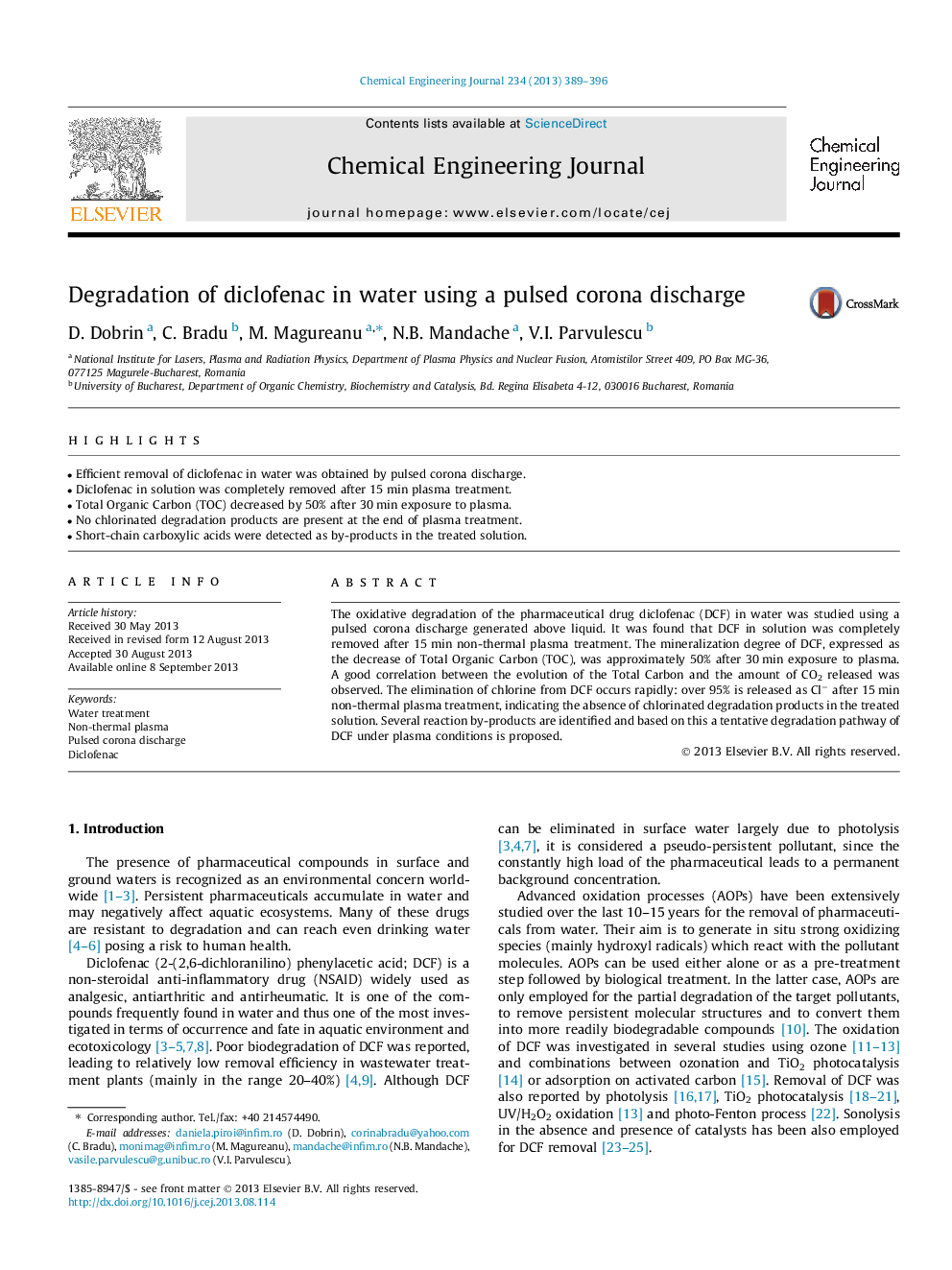| Article ID | Journal | Published Year | Pages | File Type |
|---|---|---|---|---|
| 148084 | Chemical Engineering Journal | 2013 | 8 Pages |
•Efficient removal of diclofenac in water was obtained by pulsed corona discharge.•Diclofenac in solution was completely removed after 15 min plasma treatment.•Total Organic Carbon (TOC) decreased by 50% after 30 min exposure to plasma.•No chlorinated degradation products are present at the end of plasma treatment.•Short-chain carboxylic acids were detected as by-products in the treated solution.
The oxidative degradation of the pharmaceutical drug diclofenac (DCF) in water was studied using a pulsed corona discharge generated above liquid. It was found that DCF in solution was completely removed after 15 min non-thermal plasma treatment. The mineralization degree of DCF, expressed as the decrease of Total Organic Carbon (TOC), was approximately 50% after 30 min exposure to plasma. A good correlation between the evolution of the Total Carbon and the amount of CO2 released was observed. The elimination of chlorine from DCF occurs rapidly: over 95% is released as Cl− after 15 min non-thermal plasma treatment, indicating the absence of chlorinated degradation products in the treated solution. Several reaction by-products are identified and based on this a tentative degradation pathway of DCF under plasma conditions is proposed.
